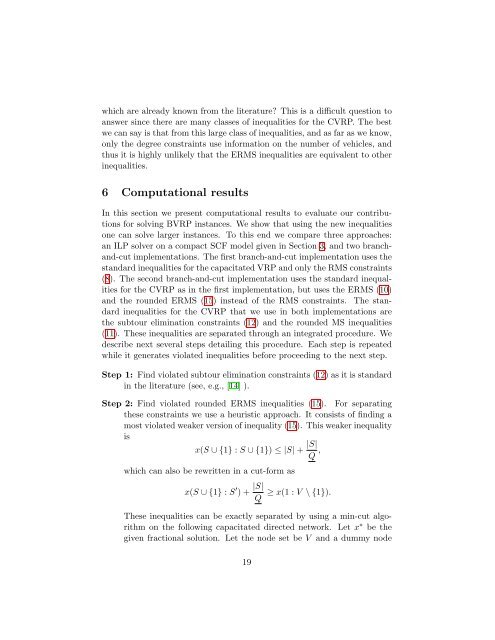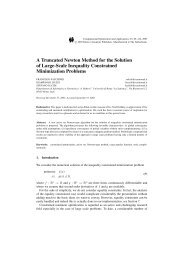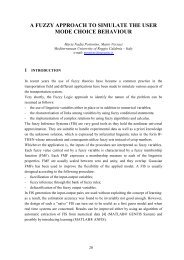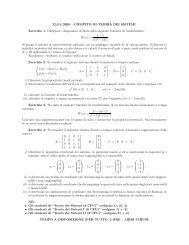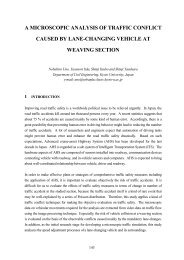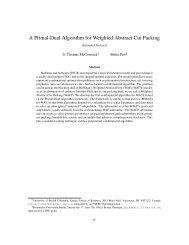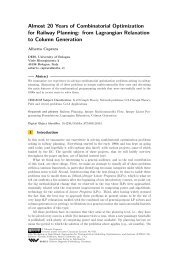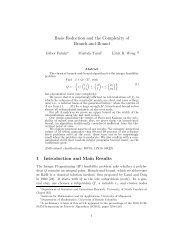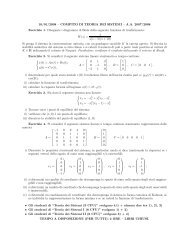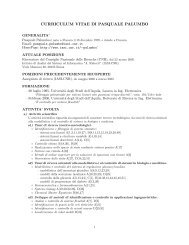Reverse Multistar Inequalities and Vehicle Routing ... - IASI-CNR
Reverse Multistar Inequalities and Vehicle Routing ... - IASI-CNR
Reverse Multistar Inequalities and Vehicle Routing ... - IASI-CNR
Create successful ePaper yourself
Turn your PDF publications into a flip-book with our unique Google optimized e-Paper software.
which are already known from the literature? This is a difficult question to<br />
answer since there are many classes of inequalities for the CVRP. The best<br />
we can say is that from this large class of inequalities, <strong>and</strong> as far as we know,<br />
only the degree constraints use information on the number of vehicles, <strong>and</strong><br />
thus it is highly unlikely that the ERMS inequalities are equivalent to other<br />
inequalities.<br />
6 Computational results<br />
In this section we present computational results to evaluate our contributions<br />
for solving BVRP instances. We show that using the new inequalities<br />
one can solve larger instances. To this end we compare three approaches:<br />
an ILP solver on a compact SCF model given in Section 3, <strong>and</strong> two branch<strong>and</strong>-cut<br />
implementations. The first branch-<strong>and</strong>-cut implementation uses the<br />
st<strong>and</strong>ard inequalities for the capacitated VRP <strong>and</strong> only the RMS constraints<br />
(8). The second branch-<strong>and</strong>-cut implementation uses the st<strong>and</strong>ard inequalities<br />
for the CVRP as in the first implementation, but uses the ERMS (10)<br />
<strong>and</strong> the rounded ERMS (15) instead of the RMS constraints. The st<strong>and</strong>ard<br />
inequalities for the CVRP that we use in both implementations are<br />
the subtour elimination constraints (12) <strong>and</strong> the rounded MS inequalities<br />
(11). These inequalities are separated through an integrated procedure. We<br />
describe next several steps detailing this procedure. Each step is repeated<br />
while it generates violated inequalities before proceeding to the next step.<br />
Step 1: Find violated subtour elimination constraints (12) as it is st<strong>and</strong>ard<br />
in the literature (see, e.g., [14] ).<br />
Step 2: Find violated rounded ERMS inequalities (15). For separating<br />
these constraints we use a heuristic approach. It consists of finding a<br />
most violated weaker version of inequality (15). This weaker inequality<br />
is<br />
x(S ∪ {1} : S ∪ {1}) ≤ |S| + |S|<br />
Q ,<br />
which can also be rewritten in a cut-form as<br />
x(S ∪ {1} : S ′ ) + |S|<br />
Q<br />
≥ x(1 : V \ {1}).<br />
These inequalities can be exactly separated by using a min-cut algorithm<br />
on the following capacitated directed network. Let x ∗ be the<br />
given fractional solution. Let the node set be V <strong>and</strong> a dummy node<br />
19


